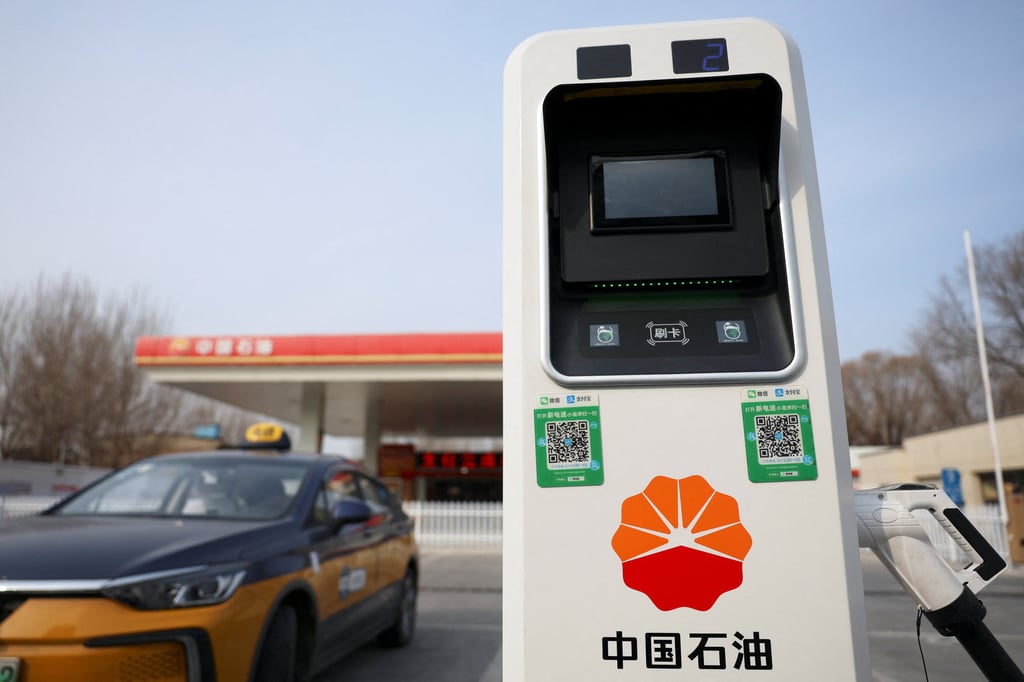PetroChina pays US$839 million to buy parent’s electric unit to shift towards green energy

The state-owned company said on Monday that it would pay 5.979 billion yuan (US$839 million) to its parent China National Petroleum Corporation (CNPC) to buy 100 per cent of CNPC Electric Energy, which is engaged in power generation, supply and sales, heat supply, and the design and construction of power projects.
“This acquisition is aimed at pressing ahead with PetroChina’s endeavours in energy transition and green development, and to enhance the competitiveness of our new energy business,” PetroChina’s president and executive director Huang Yongzhang said in Hong Kong on Wednesday. “Petrochina’s wind power and solar power business segments are developing rapidly.”
PetroChina plans to establish a platform for buying and selling power by coordinating with its existing businesses in the production and consumption of renewable energy, Huang said.

China’s largest oil and gas producer sold less of the output from its refineries, with the sales volume of gasoline, kerosene and diesel dropping by 2 per cent to 79.05 million tonnes in the first six months of the year. The company’s interim net profit rose 3.9 per cent to 88.61 billion yuan, on the back of a 5-per cent increase in revenue to 1.55 trillion yuan.
Oil consumption in China’s transport sector will peak next year “at the latest,” as the rapid adoption of electric vehicles (EVs) saps petroleum usage, putting the annual nationwide demand for oil on the path to reach its peak of between 780 and 800 million tonnes before 2030, CNPC’s research institute said in April.
Faced with the slowing prospect for oil consumption and the global clean energy push, PetroChina has also been investing in solar and wind energy projects in Xinjiang and Qinghai. The company’s energy output from wind and solar power plants more than doubled to 2,170 Gigawatt-hours (Gwh) in the first half of 2024, compared with a year earlier. External power supply surged 3.5 times to 950 Gwh in the first half.
The acquisition of CNPC’s Electric Energy will further help leverage the synergy between its renewable energy and power segments, said Huang on Wednesday.
The company targets to raise the share of renewable energy in its overall production from about 7 per cent this year, to 30 per cent by 2035, and 50 per cent by 2050, according to PetroChina.
Source link



